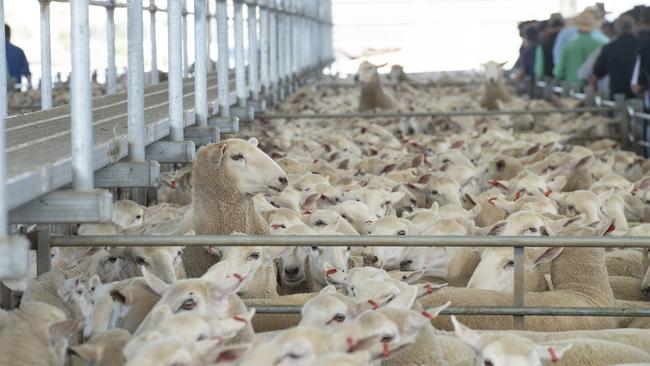Australian livestock prices set to stabilise in 2024, analysis says
Optimism is in the air for cattle and sheep producers as analysts predict what’s in store for 2024. See the latest outlook.
Analysts say weather will again determine the fortunes of livestock producers next year but without the volatility seen in the past 12 months.
The Weekly Times asked two of the nation’s leading agricultural commodity watchers – Mecardo and Episode 3 – what they thought the new year could bring for livestock prices and both predicted smoother waters for 2024.
Mecardo market insights lead Olivia Agar said there were still some challenges ahead in processing capacity, elevated supply and demand shifting between key beef and sheepmeat markets.
“The turnaround we’ve seen in the past month is really encouraging,” Ms Agar said.
“Producers are now finding themselves with more options, and a whole lot more confidence in the market.”
And on the trade front, Ms Agar said international beef prices suggested there was plenty of upside for both finished and young cattle if a more steady supply and demand balance was reached.

Episode 3 director Matt Dalgleish said he believed the livestock industry had seen the worst of price falls and that prices should stabilise.
“Both sheep and cattle are still undervalued presently so I’d expect further steady gains into the first half of 2024,” Mr Dalgleish said.
“I’m expecting a much more normal seasonal price behaviour, but the caveat on that would be a reformation of El Nino post the summer and a potential move back to prospects of a dry 2024.”
As for the national herd and flock, opinions are mixed on whether it will remain steady or shrink.
Ms Agar said female slaughter rate from Australian Bureau of Statistics data showed the cattle herd was on track to move into that destocking phase.
“But the September numbers show we are well off a serious liquidation like June to September 2020, where females accounted for 54 per cent of total slaughter,” Ms Agar said.
“The recent rain and price movements have shown just how quickly confidence can appear and so we think it’s more likely we will reach some sort of steady herd state for the coming year.”
When it comes to sheep, Ms Agar said the strong lamb slaughter this year, predicted to be about 24.8 million lambs, had included future breeders according to anecdotal reports.
“We are still likely to see some decline in the flock this season, however there’s still plenty to play out with seasonal conditions from here,” she said.
Episode 3 is leaning towards a shrinking herd and flock.
“I’m expecting both the flock to move into liquidation phase next year and I think the herd is already in it now,” Mr Dalgleish said.
Mr Dalgleish said the situation would become clearer when forecasts were released for autumn.
“A reformed El Nino and potential dry will see us definitely move into stronger liquidation phase,” he said.
“No reformed El Nino will likely see the chance of liquidation of flock and herd ease but I don’t think this will be enough to get restocking activity going strongly again.”
While the industry grapples with how it dealt with the El Nino forecasts this year, Mr Dalgleish said it was important not to blame the BOM for what occurred to markets.
“It was part of why producers lost confidence but not the only reason,” he said.
“I think many were expecting a return to dry before the BOM outlook confirmed it as the chances of getting four consecutive seasons of wetter than average was pretty unlikely based on historic weather patterns.
“I think the bigger issue this season was the processor bottlenecks that caused the poor price reaction as turn-off lifted.
“We’re not yet slaughtering drought level numbers and the processing sector struggled to get through the volumes, this is the real issue we need to solve – processor capacity and labour access.”
But Ms Agar said El Nino forecasts had influenced behaviour of livestock producers.
“Just as the lessons from the last horrific El Nino and drought influenced some producers to take a more cautious approach in their decision making this year, producers will be learning from this year’s experience too,” she said.
“It’s been a harsh but good reminder of the variability even within climate systems like an El Nino, and how important it is to base risk management decisions on your own business and conditions.”




